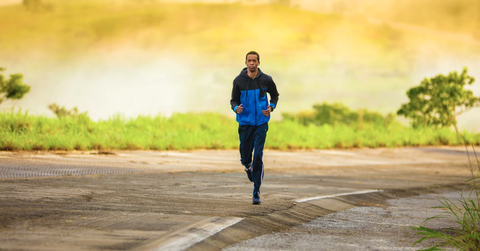Running is undoubtedly one of the best ways to stay as fit as possible. It’s great for physical endurance, great cardio, and even great for mental clarity to most. But in spite of all its potential mental and physical health benefits, there are a couple of obvious hurdles most of us must get over: First, it can be grueling. And second, it sure can do a number on your joints. All the constant impact on top of those hard surfaces can destroy your knees, hips, and lower back. It can bring on stiff muscles and ligaments, which inevitably leads to even more wear and tear on the rest of your body.
There are ways to prevent this, though. With a little bit of attention, some planning, or even a targeted routine, running doesn’t have to wreak havoc on your joints.
Take Up Resistance Training
Resistance training may not be what you’re in this for and it may even just sound like another chore to add to your fitness to do list. But the truth is, resistance training strengthens your core, your back, and the very muscles that will inevitably stabilize your ankles and knees when running.
Resistance training, or strength training as it’s also called, builds the strength, anabolic endurance, and size of your skeletal muscles, therefore reducing the risk of common running injuries to your joints.
Go Barefoot
You don’t have to literally run barefoot for this one but there is science behind the idea. Whether it’s being truly barefoot or wearing what are known as minimalist shoes, minimizing whatever goes between the bottom of your feet and the ground can have profoundly positive impacts.
To the contrary, wearing any kind of sole forces your heels up and hinges your knees and hips into ever-so-slightly unnatural positions. Cushioned heels shorten your Achilles tendon and change the alignment of the ankle. From there, our calves are shortened, knees bent forward ever so slightly to compensate for that change. That shift pulls on the quadriceps which then pulls on the hamstrings, so on and so forth.
Avoid Foods That Trigger Inflammation
Sugar, refined carbs, and even processed meats are just a few foods that can trigger inflammation. Chronic inflammation is typically the body’s reaction to constant physical stress, which technically, is exactly what you’re doing to your joints when you go for long runs day after day. By combining the two — running and eating foods that trigger inflammation — you’re only heightening your chances of joint injuries and chronic pain.
Stretch
Stretching is a great way to relieve stress on your body from any type of exercise but go running multiple times in a week and you will certainly know the discomfort of stiff hamstrings and hips the next day. Muscles tighten up and can get stiff when we sleep at night, which is exactly why we tend to be so sore when we wake up in the morning. Whether you exercise often or are sedentary most of the day, you’re likely to experience this, so waking up and stretching or rolling out your muscles is one of the best habits you can commit to.

